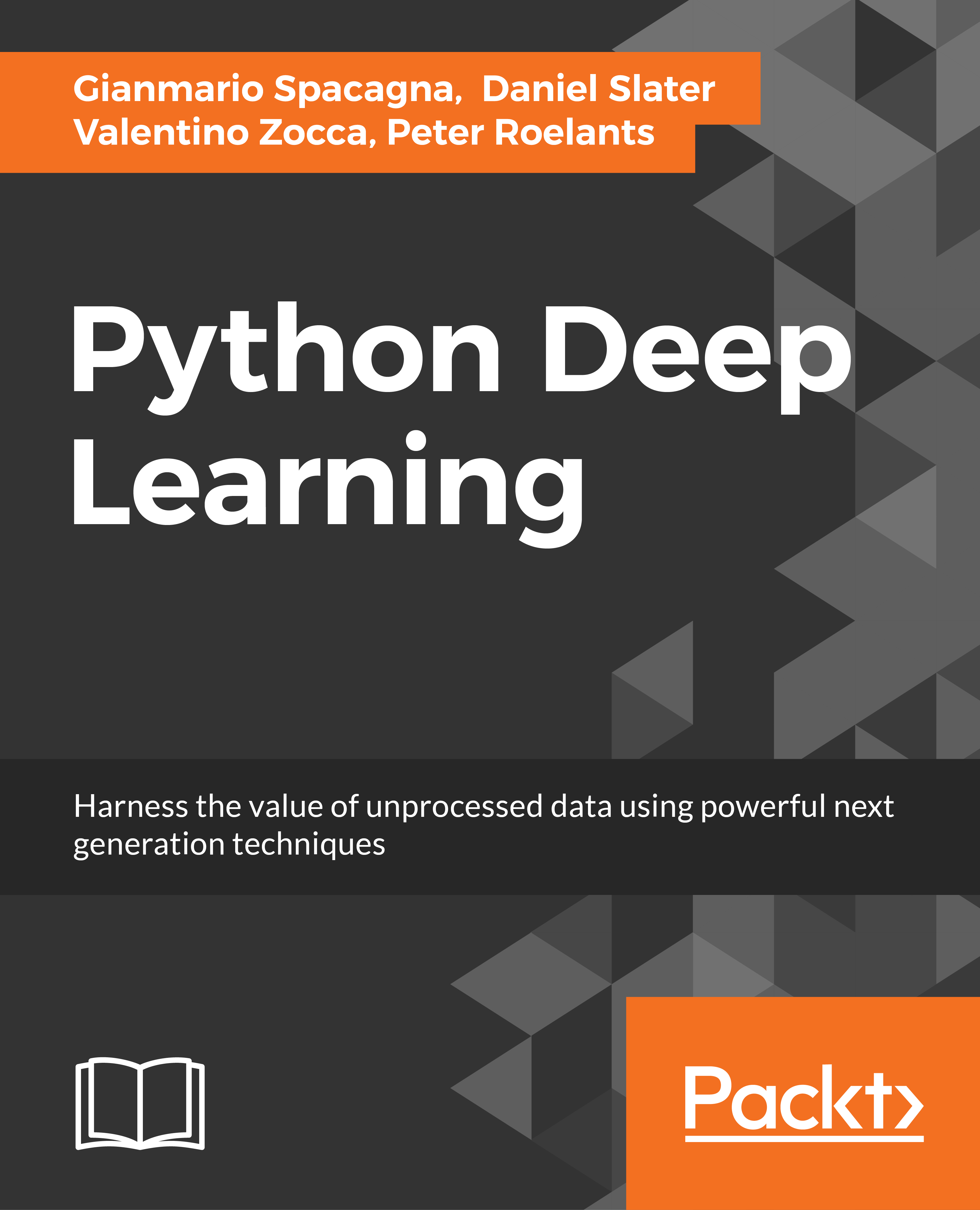-
Book Overview & Buying

-
Table Of Contents

Python Deep Learning
By :

Python Deep Learning
By:
Overview of this book
 Free Chapter
Free Chapter
 Sign In
Start Free Trial
Sign In
Start Free Trial


 Free Chapter
Free Chapter
"Machine Learning (CS229) is the most popular course at Stanford" –this is how a Forbes article by Laura Hamilton started, continuing- "Why? Because, increasingly, machine learning is eating the world".
Machine learning techniques are, indeed, being applied in a variety of fields, and data scientists are being sought after in many different industries. With machine learning, we identify the processes through which we gain knowledge that is not readily apparent from data, in order to be able to make decisions. Applications of machine learning techniques may vary greatly and are applicable in disciplines as diverse as medicine, finance, and advertising.
In this chapter, we will present different Machine learning approaches and techniques, and some of their applications to real-world problems, and we will introduce one of the major open source packages available in Python for machine learning, scikit-learn. This will lay the background for later chapters in which we will focus on a particular type of machine learning approach using neural networks that aims at emulating brain functionality, and in particular deep learning. Deep learning makes use of more advanced neural networks than those used during the 80's, thanks not only to recent developments in the theory but also to advances in computer speed and the use of GPUs (Graphical
Processing Units) versus the more traditional use of CPUs (Computing Processing Units). This chapter is meant mostly as a summary of what machine learning is and can do, and to prepare the reader to better understand how deep learning differentiates itself from popular traditional machine learning techniques.
In particular, in this chapter we will cover:
